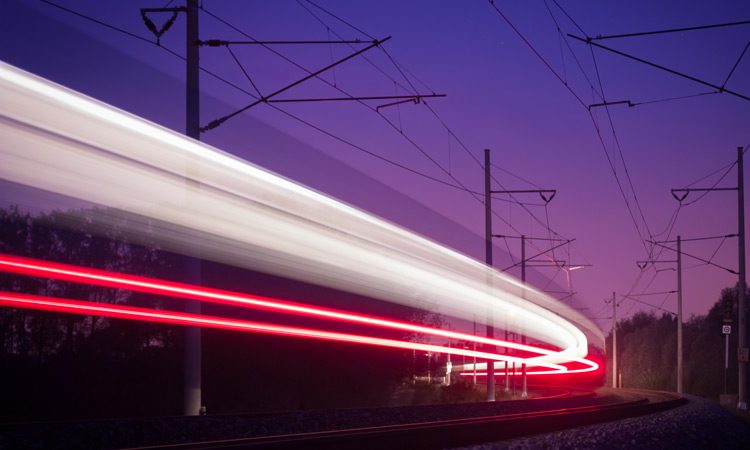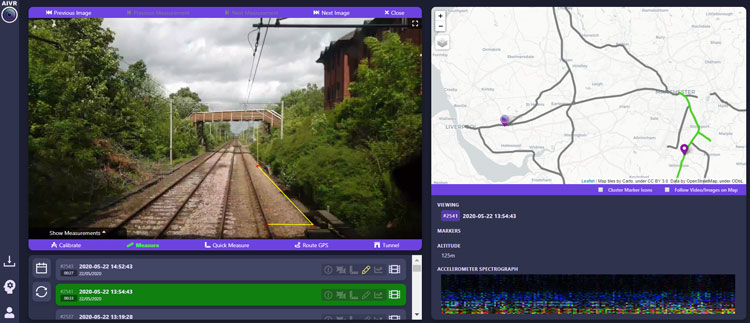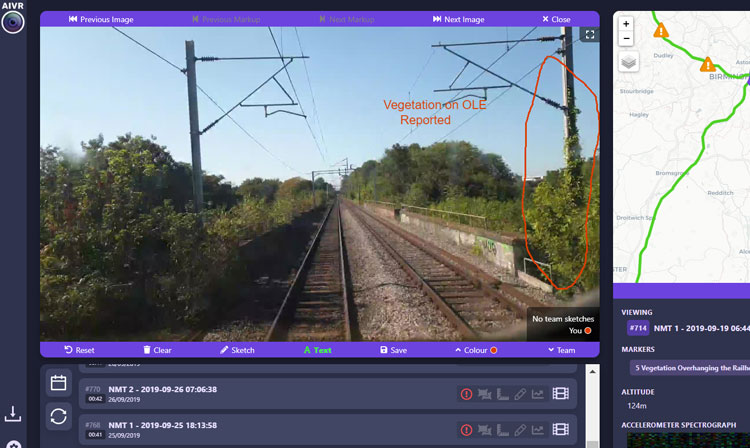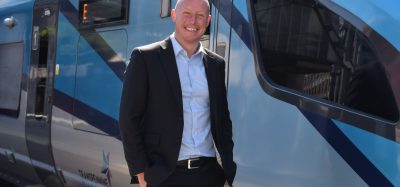Q&A with One Big Circle’s Emily Kent: Driving rail’s digital transformation
Posted: 1 June 2020 | Global Railway Review, One Big Circle | No comments yet
Global Railway Review talks to Emily Kent, Co-Founder of One Big Circle, about how intelligent video technology can be utilised in the rail sector as it continues its journey to digitalisation.


What is One Big Circle’s story so far, and why is rail an important sector for you to be in?
As specialists in intelligent video, One Big Circle’s founders had worked with UK Highways on critical video systems, and previously created a sports replay video platform which enabled instant edited replays to be viewed online. In 2019, we were considering further opportunities for our video expertise and looking to build something new. This led to us exploring where and how video could bring significant benefits and deliver solutions to real-world challenges being faced in the rail industry.
From our offices in Brunel’s Engine Shed at Bristol Temple Meads Station, we developed an early prototype of AIVR – Automated Intelligent Video Review. AIVR is a lightweight device that can be rapidly deployed onto any operational vehicle to automatically capture video data. The edge device combines video with telemetry and other data and transmits it instantly via 4G so that the valuable data can be immediately accessed securely online.


Emily Kent, Co-Founder, One Big Circle
With our proof of concept already tested on roads, we approached the rail industry to gauge the appetite for the innovation and Network Rail were early responders, providing an opportunity to test AIVR on-board their network measuring trains (NMTs). Following successful trials with them, we have developed relationships with several Network Rail groups and projects – such as the Signalling Innovations Group (SIG) and the Bristol Area Signalling Renewals and Enhancements (BASRE) – and have some really exciting video data projects taking place.
The rail sector has become important to us because of the challenges faced in safety, asset management and remote condition monitoring, and we can clearly see where rapidly accessible video will deliver benefits. There is a clear business case for it and the industry has the right mindset to exploit this technology.
Despite the numerous challenges for an SME (small- and medium-sized enterprises) to break into the industry, we have been really pleased with the engagement and approach of so many forward-thinking individuals and organisations. By developing a licence-based, robust, and rapidly deployable product, we are meeting a need and have worked collaboratively to help enhance current systems.
Transport for Wales (TfW) have recently used your AIVR devices on trains to automatically record, analyse and report vegetation risks along tracks. What has been TfW’s feedback on the use of this technology so far?
TfW deployed AIVR at the end of 2019 having seen our demo at one of the Rail Innovation Group’s start-up events. Using AIVR, they captured video of the whole of the Wales rail network in less than four weeks, moving the device around operational trains. They continue to use AIVR devices to collect vital up-to-date footage which they can access remotely online via their secure dashboard. They can view the same route over different seasons and conditions, before and after works, and can use this data for modelling and forecasting.
The Vegetation Machine Learning model also being developed and refined with TfW is trained on their environment to identify areas of vegetation at different levels of risk. This means off-track work can be scheduled more efficiently, and the up-to-date video of the target areas, access points and other assets and obstacles can all be shared and planned for in advance.


AIVR dashboard with quick measure tool.
TfW engagement and feedback has been wholeheartedly enthusiastic, and it is delivering measurable results – reducing ‘boots on the ballast’ whilst providing more virtual access to the network. We are part of a very active and engaged TfW AIVR Working Group with multiple stakeholders. The drive and support of the group to increase safety, improve operations and advance their working practice by deploying AIVR is fantastic.
A further benefit of our open and collaborative approach is that the same data can also be deployed for multiple purposes, achieving significant results. To help meet the challenges of lockdown, for example, the data is being used for remote driver training and for route familiarisation – particularly beneficial as AIVR has collected route data from a cab view perspective in a range of conditions. The data can also be securely accessed by partner organisations, subject to agreements, to increase collaboration between key stakeholders.
An unexpected benefit is that TfW also shares selected areas of routes to engage with their passengers and followers on social media, which is very positively received. It is very therapeutic to watch some footage of the beautiful Welsh scenery unfold before your eyes!
How easy is it for your AIVR devices to be installed into cabs, and is it distracting to the train driver?
The AIVR device can be fitted into a cab in minutes using a simple suction device and left in situ. The rest of the process is completely automated. Recording is automatically activated upon motion and the data is transmitted continually via 4G throughout the journey. To avoid distraction, the screen has a preview but then goes to black for the duration of the journey. The camera is outwards facing and doesn’t record or emit audio.


AIVR dashboard mark-up tool.
With the restrictions on cab rides for maintenance coming into place, we have been able to work closely with Network Rail’s SIG on their Tail Lamp Camera (TLC) solution. This has been designed to overcome the current restrictions by housing technology externally and delivering the same, or better, output.
How have you made sure your devices are secure against cyber-attacks?
Security is extremely important to us and we ensure that our customers have complete confidence in the stringent protocols we have in place. The data is encrypted for transmission and stored securely in the cloud.
In what ways have you had to adapt your technology to aid remote project planning during the restricted measures of COVID-19?
The data has proved invaluable in times of restricted measures. Being able to instantly see and monitor the environment you are responsible for from your own home helps to ensure that critical works can continue. Our cloud-based technology was built for remote access, so it has stood up very well in the shift to remote working. In addition, our Bristol-based team have all moved smoothly into home working, whilst continuing our close collaboration and communication.
In response to the crisis, and in answer to the changing needs of our clients, we rapidly accelerated the development of our online tools and are proud of how quickly we were able to make these available. These powerful tools now allow you to take measurements from video, enable you to quickly annotate and mark-up directly onto the video, and easily share video and reports across the team or with project stakeholders so you can work collaboratively from the ‘single source of truth’.
When restrictions on entering cabs alongside the driver were put in place, we worked closely with our customers on the alternatives for positioning the AIVR device. As well as SIG’s TLC solution being developed, this included drivers placing the device, using the rear cab for capturing data, installing the device at depots before the journey, and further developing our fixed AIVR-Connect device.
All of these approaches allow data to continue to be collected and transmitted during this difficult time and builds organisational resilience for the future. This is a clear benefit of working with an established SME that prioritises innovation, quality and rapid response.
What drives One Big Circle’s ambition to assist the rail sector along its digital transformation journey?
Being relatively new to the rail sector, it has been rewarding to find a real drive across the industry to explore solutions to the multiple challenges being faced in creating the Digital Railway.
Being relatively new to the rail sector, it has been rewarding to find a real drive across the industry to explore solutions to the multiple challenges being faced in creating the Digital Railway. This approach really helps with our own ambition to develop a product that meets user requirements and continues to evolve through a dynamic feedback loop. We clearly see the difference that up-to-date video makes on safety, planning and operations, so capturing that video and making it easily but securely accessible is absolutely crucial.
Other organisations – such as the Rail Innovation Group and the Railway Industry Association (RIA) – have been invaluable in helping us, as an SME, to establish a presence in the sector, and we, in turn, want to share our experience of entering the rail market. We are already working with fantastic people across many organisations and groups who are driving the digital transformation journey. We have had feedback from customers that there is a real energy in us as an SME, bringing deep video expertise from outside of the industry in to meet the large organisational requirements.
COVID-19 presents a new and challenging set of circumstances within which to operate, but the rail sector and the rail family, of which we feel a part, is rising to those challenges with real ingenuity and determination. We are glad that AIVR can help to deliver on that.
Related topics
Big Data, Coronavirus/COVID-19, Digitalisation, Technology & Software, The Workforce








